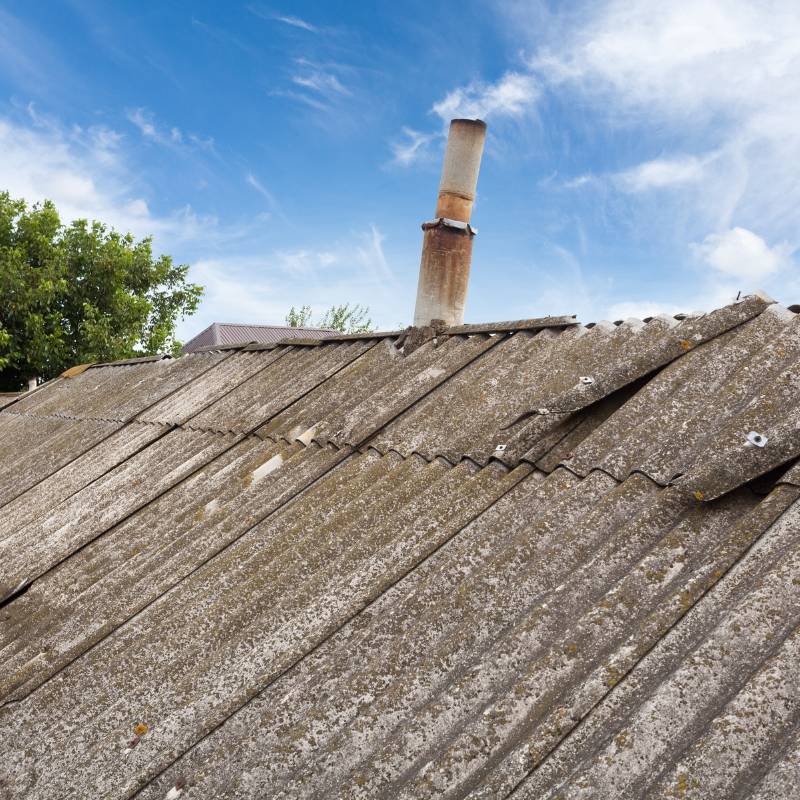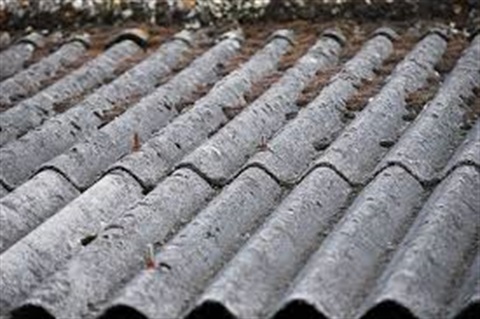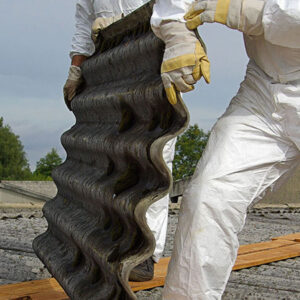Asbestos Roof Removal Service Reviews And Feedback Testing, Removal & Disposal Of Asbestos
Asbestos Roof Removal Service Reviews And Feedback Testing, Removal & Disposal Of Asbestos
Blog Article
Asbestos Roof Encapsulation Alternatives Residential Asbestos Removal Services
Asbestos risk assessment is a crucial process for making certain the security and health of people exposed to this hazardous material. Asbestos, once commonly used in building and insulation merchandise, poses severe health risks, including lung cancer, mesothelioma, and asbestosis. Given its widespread historic use, understanding asbestos risk assessment is crucial for owners, property managers, and building professionals.
The preliminary phase of asbestos risk assessment sometimes includes figuring out potential asbestos-containing materials (ACMs) in a building. This includes an intensive inspection, usually performed by licensed professionals educated in recognizing and sampling materials that will comprise asbestos. Inspectors give consideration to areas corresponding to insulation, floor tiles, textured paints, and roofing materials, that are traditionally identified for asbestos use.
Local Regulations For Asbestos Handling Removal & Replacement Of Roof Asbestos

Once potential ACMs are recognized, samples are collected for laboratory evaluation. This step is essential since not all materials that look just like asbestos are literally dangerous. The evaluation is carried out to determine the presence and focus of asbestos fibers. These laboratory outcomes guide subsequent actions regarding management and abatement.
Risk assessment also contains evaluating the condition of any identified asbestos materials. Damaged or deteriorating ACMs are more hazardous due to the elevated probability of fiber launch into the air. Professionals study the extent of harm and the potential for exposure based mostly on the material’s location and condition. This assessment informs the danger level posed to occupants and employees in proximity to the recognized materials.
An integral a part of the assessment is contemplating the location of the ACMs. Materials in high-traffic areas could current greater risk as a outcome of potential for disturbance. Likewise, materials utilized in ventilated areas may launch extra fibers if disturbed, increasing the chance of inhalation. The evaluation additionally consists of assessing who may be uncovered and under what circumstances they may come into contact with dangerous asbestos fibers.
Asbestos Safety Guidelines For Roof Work Cost Guide For Asbestos Removal
Determining the timeframe of exposure is one other key facet of asbestos risk assessment. Short-term exposure might carry decrease risks compared to long-term or repeated exposure. Although even temporary encounters with excessive levels of asbestos may be harmful, understanding these nuances helps in accurately assessing the chance to individuals over time.
Recommendations are then fashioned primarily based on the findings of the chance assessment. If the assessment identifies significant hazards, options could include monitoring, encapsulation, or removal of the ACMs. Each option presents its personal set of considerations, together with cost, disruption, and long-term safety.
Regular monitoring and periodic assessments may be needed in some circumstances. This is as a end result of circumstances in a building can change over time, potentially affecting the security of ACMs. These ongoing evaluations ensure that any new risks are identified promptly, permitting for immediate corrective measures if needed.
Documentation plays a major role in asbestos risk assessment. All findings, recommendations, and actions taken have to be meticulously recorded for legal and compliance reasons. Record-keeping offers a transparent history of the danger assessment process, which is essential for informing future assessments and guaranteeing safety regulations are followed.
Educational Resources On Asbestos Safety Removal Of Asbestos Roof In Area
Compliance with native and federal regulations is one other critical consideration in the assessment process. Different jurisdictions may have particular laws governing asbestos dealing with and risk assessment. Stakeholders have to be acquainted with and cling to those regulations to ensure the safety of public health and avoid potential legal penalties.
Public education about asbestos risks is significant as nicely. Many people stay unaware of the hazards associated with asbestos exposure and the importance of proper assessments. Community awareness can inspire action, encouraging property house owners to conduct assessments and take essential precautions, thereby reducing the overall risk of exposure.
In conclusion, asbestos risk assessment is an important practice for figuring out and mitigating the risks posed by asbestos in varied environments. The process encompasses thorough inspections, laboratory evaluation, condition evaluations, and compliance with regulations. Through effective risk assessment, it's potential to safeguard public health, making it crucial for householders and professionals alike to prioritize these evaluations in properties potentially containing asbestos.
Local Regulations For Asbestos Handling Removal & Replacement Of Roof Asbestos
- Identification of asbestos-containing materials (ACMs) in buildings through thorough inspections and sampling techniques.
- Evaluation of the condition and extent of damage to ACMs, contributing to understanding the urgency of risk management.
- Assessment of exposure risks for various occupation groups working in or near asbestos sites, including maintenance and development personnel.
- Implementation of legal and regulatory requirements, making certain adherence to local and national safety requirements concerning asbestos handling.
- Development of a tailored asbestos management plan, outlining steps for monitoring, maintenance, and potential removal of ACMs.
- Training and education schemes for employees on asbestos hazards and safe work practices to minimize exposure.
- Regular re-evaluations of asbestos conditions to account for modifications in the building environment or occupancy levels.
- Use of risk communication methods to inform stakeholders about asbestos presence, risks, and management activities.
- Collaboration with health professionals to monitor any health effects on employees probably exposed to asbestos fibers.
- Establishment of emergency response plans for asbestos-related you can try this out incidents to effectively manage exposure risks and you can look here ensure safety.
What is asbestos risk assessment?
Asbestos risk assessment is the method of evaluating the potential hazards posed by asbestos materials in a building. This assessment helps identify the presence of asbestos, consider its condition, and determine the level of risk to occupants and employees, guiding needed actions for management or removal.
Why is an asbestos risk assessment necessary?
Asbestos Roof Removal Insurance Requirements Safe, Reliable And Experienced Removal Services
An asbestos risk assessment is important to protect the health and safety of people who could additionally be exposed to asbestos fibers - Local Regulations For Asbestos Handling. It helps identify areas where asbestos is current, assess the danger of exposure, and implement appropriate management measures to mitigate these risks, making certain compliance with legal regulations
How typically should an asbestos risk assessment be conducted?

It is recommended to conduct an asbestos risk assessment each three years or each time vital changes happen in the building environment, corresponding to renovations or adjustments in occupancy. Regular reassessment ensures that any changes in asbestos situation or risk exposure are promptly recognized and addressed.
Who ought to conduct the asbestos risk assessment? (Residential Asbestos Roof Removal Sydney)
Importance Of Monitoring Air Quality During Removal Hazardous Materials & Disposal Services
The assessment should be carried out by a qualified and licensed asbestos professional with expertise in identifying and managing asbestos-containing materials. This ensures that the assessment is thorough, correct, and compliant with local regulations and safety guidelines.

What happens if asbestos is found during the risk assessment?
If asbestos is discovered, the qualified professional will advise on the most effective course of action, which can include leaving it undisturbed whether it is in good situation, encapsulating it, or safely removing it. Ongoing monitoring and management plans will usually be established to ensure safety.
Can I perform an asbestos risk assessment myself? - Asbestos Roof Removal Machinery And Tools
Asbestos Removal Equipment Used In Sydney Safe, Reliable And Experienced Removal Services
While some preliminary assessments can be made by people who are knowledgeable about asbestos, it's strongly recommended to hire a certified professional for a complete risk assessment. Professionals have the correct training and tools to precisely identify and consider asbestos risks.
What are the potential health risks of asbestos exposure?
Asbestos exposure can lead to critical health points, including asbestosis, lung most cancers, and mesothelioma. These situations often develop after extended exposure, making it crucial to assess and manage asbestos risks diligently to guard public health.
Asbestos Awareness Campaigns In Sydney Removal Of Asbestos Roof In Area
Are there regulations regarding asbestos risk assessments?
Yes, many nations have particular regulations governing asbestos management, together with the requirement for normal risk assessments in industrial buildings and certain residential structures. Compliance with these regulations is obligatory to make sure safety and keep away from legal repercussions.
What ought to I do if I suspect asbestos in my home?
Impact Of Weather On Asbestos Roof Removal Costs Associated With Removal And Replacement
If you suspect the presence of asbestos in your house, don't disturb the fabric. Contact a licensed asbestos professional to conduct a risk assessment and decide the most effective plan of action to manage or remove the asbestos safely.
Report this page